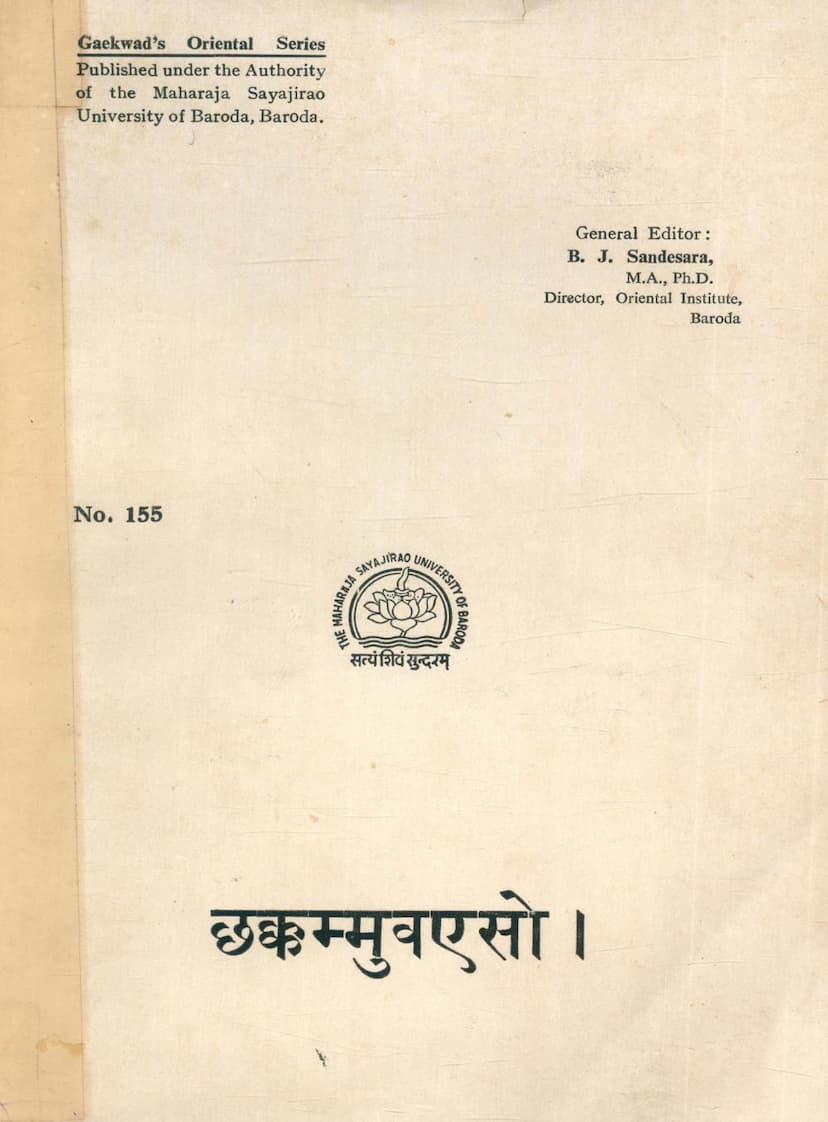Chakkammuvaeso
Added to library: September 1, 2025

Summary
Chakkammuvaeso, authored by Amarakirti and edited by Madhusudan C. Modi, is a significant 13th-century AD Apabhramsa poem by a Digambara Jain poet who resided in Godhra, Gujarat. Published in 1972 by the Oriental Institute, Baroda, under the Gaekwad's Oriental Series, this work offers a discourse on six essential duties for Jain householders: worship of the deity, devotion to the preceptor, study of scriptures, self-restraint, penance, and charity.
The poem is structured into 14 sandhis (chapters), comprising 214 kadavakas (sections) and totaling 3203 lines. The majority of the text, particularly Sandhis 2 through 9, is dedicated to elaborating on the eightfold worship of Jina, which includes offerings of water, fragrant ingredients, rice, food, flowers, light, incense, and fruits. The author ingeniously interweaves these doctrinal descriptions with nine edifying stories, each illustrating one of the nine aspects of Jina worship (including the cumulative worship with all eight objects). This narrative approach sustains reader interest. The initial sandhi serves as an introduction, while the final four sandhis cover the remaining duties of a householder, interspersed with doctrinal explanations of Jain tenets. The concluding lines of Sandhi 14 provide the date of composition and the time taken by the author to complete the work.
The critical edition by Professor Modi is a scholarly endeavor, meticulously detailing the manuscript material used, offering a linguistic and metrical analysis, and providing an English summary and a comprehensive word-index. The book's introduction delves into the title's meaning, the author's life and works, and the historical context of its composition in 13th-century Gujarat. It also discusses the peculiarities of the manuscripts and their orthography, along with phonological and grammatical notes. The detailed analysis of the various metres employed in the poem highlights the poet's metrical skill and the linguistic evolution of Apabhramsa.
The stories within the Chakkammuvaeso, particularly from Sandhis 2 to 9, are popular religious narratives that are found to have parallels in Svetambara traditions as well, suggesting a shared literary heritage. The author's dedication to Amarakirti's original Sanskrit work and its subsequent paraphrase in Apabhramsa is noted, allowing for the preservation of the core teachings within a more accessible linguistic framework. The work's publication was supported by financial aid from the University Grants Commission and the Gujarat State, underscoring its academic and cultural importance.